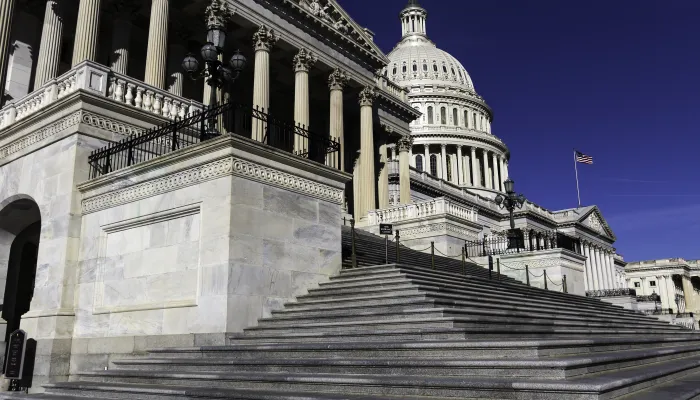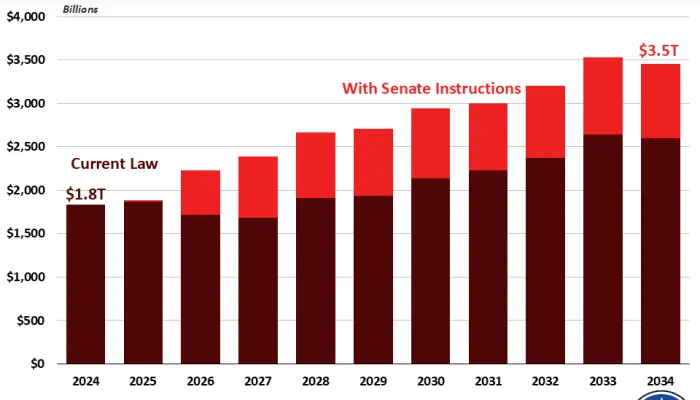House Budget Confirms It Takes $8 Trillion to Balance the Budget
The Fiscal Year (FY) 2017 House budget resolution that advanced out of the House Budget Committee last week keeps up the recent tradition of targeting a balanced budget within ten years. To do so, the budget claims $6.5 trillion of policy savings, a number that is notably less than the $8 trillion we previously said would be needed to balance the budget by 2026. Upon closer inspection, though, the House budget ends up in about the same place that we did. Here's how.
Our $8 trillion number uses the Congressional Budget Office's (CBO) January budget projections as the baseline. The House budget, by contrast, makes a few adjustments to that baseline that it does not count in the savings. The first is that it assumes a drawdown of war spending after FY 2017 from $74 billion to $27 billion per year from 2018-2021 and zero after that. The second is that it assumes economic effects of $194 billion in reduced deficits from last December's tax deal, of which $150 billion comes from increased revenue and $44 billion comes from decreased outlays. The deal came after CBO had already prepared its economic forecast for the January baseline, and the agency said that when those effects were incorporated, it could add $100-$200 billion to revenue. These two adjustments (plus a minor adjustment to remove FY 2016 emergency spending from the baseline) reduce deficits by $900 billion over ten years.
In addition, the House budget incorporates the economic effects of its assumed policies. It takes the economic effect of repealing the entire Affordable Care Act (though the budget either keeps the revenue increases and spending cuts or replaces them with equivalent unspecified savings), which CBO estimated to be $216 billion over ten years ($255 billion with interest). In addition, the budget, as it has done since 2014, includes the economic effects of deficit reduction (known as a "fiscal dividend"), which reduces deficits by another $241 billion.
Adding all of these adjustments to the claimed policy savings brings total savings to $7.9 trillion, right in line with our number of $8 trillion.
| Getting to $8 Trillion of Savings | |
| Ten-Year Savings | |
| Claimed Policy Savings | $6.5 trillion |
| War Spending Drawdown | $579 billion |
| Incorporation of Economic Effect of Tax Deal | $194 billion |
| Removal of Emergency Spending | $8 billion |
| Interest | $119 billion |
| Subtotal, Baseline Adjustments | $900 billion |
| Economic Effect of ACA Repeal | $254 billion |
| Economic Effect of Deficit Reduction | $241 billion |
| Subtotal, Economic Effects | $495 billion |
| Total Savings Compared to CBO Baseline | $7.9 trillion |
| CRFB Estimated Savings to Balance the Budget | $8.0 trillion |
Source: House Budget Committee, CRFB calculations
Thus, while the House budget claims $6.5 trillion of policy savings, it uses baseline adjustments and economic effects to get the rest of the way necessary to balance the budget.


